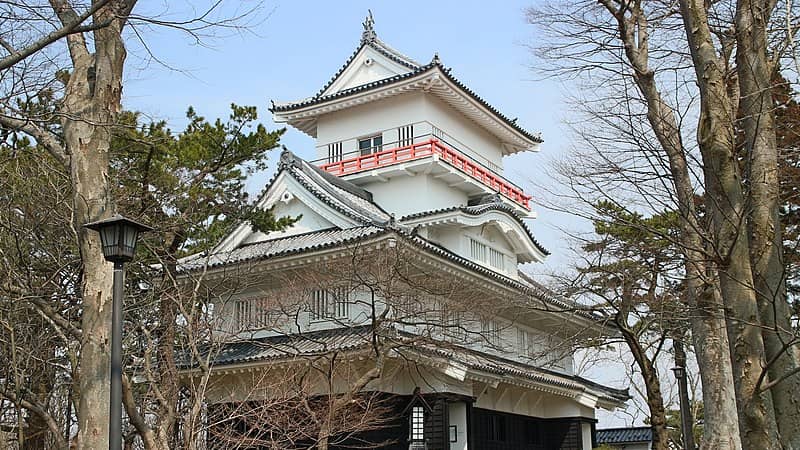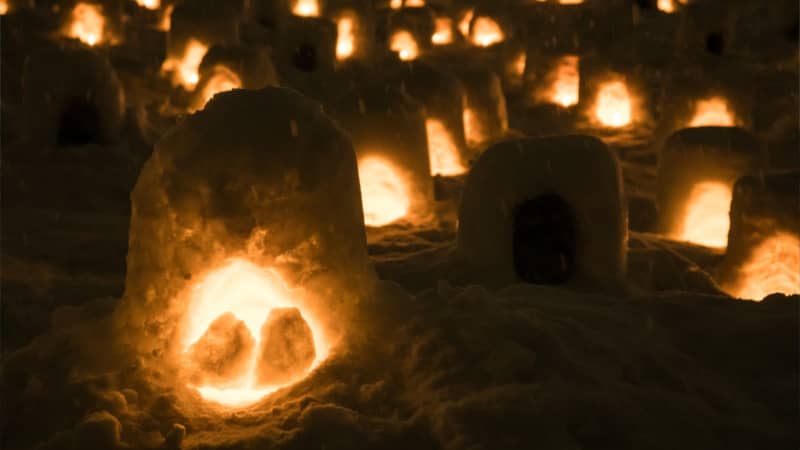Akita prefecture and its capital, Akita City, is located in the Tohoku Region in the north of Japan’s largest island, Honshu. Akita translates to ‘autumn rice paddy’ in Japanese, and accordingly the prefecture is well-known for its extensive rice farming. It is also famous for its sake breweries and for supposedly being the origin of the Akita dog breed.
Akita prefecture is also well-known throughout Japan for a wide variety of impressive natural beauty spots. These include vast mountain ranges with ample skiing opportunities, numerous onsen hot spring towns, and Tazawa Lake, the deepest lake in Japan.
This complete guide to the prefecture can help you decide on the best attractions to visit in Akita City and the surrounding area, as well as how to easily travel to Akita on Shinkansen trains with a JR Pass
How to get to Akita from Tokyo
There are several public transportation options that you can use to get from Tokyo to Akita. The most convenient for Japan Rail Pass holders is to ride the Shinkansen from Tokyo Station or Ueno Station.
The Tohoku Shinkansen line will take you to Morioka where, without getting off the train, you will follow the Akita Shinkansen line to Akita Station in the prefectural capital.
The Shinkansen fare is fully covered by the JR Pass, although it is necessary to make a seat reservation in advance. The entire one-way trip takes around 4 hours.
It is also possible to fly between Akita and Tokyo in around 70 minutes. A one-way flight between Haneda Airport in Tokyo and Akita Airport costs around 28, 000 yen for a regular adult ticket, although discount fares between 14,000 and 18,000 yen may also be available.
Finally, a number of overnight buses operate from Tokyo to Akita. The journey takes around 8 hours. A one-way ticket costs roughly 9,500 yen, and a round trip costs approximately 17,000 yen.
What to do in Akita City
Although it is one of the smaller prefectural capitals, Akita City is full of enticing tourist attractions to explore, many within easy walking distance of the centrally-located Akita Station. These include:
- The Akita Museum of Art – Designed by architect Ando Tadao, this extensive art space boasts a large collection of work by famous western-style Japanese painter Fujita Tsuguharu.

Akita Museum of Art - Akita Prefectural Museum – Home to a huge range of exhibits that outline the history and folklore of the prefecture.

Akita Prefectural Museum - Kubota Castle – Located in Senshu Park, this historic Japanese castle was largely destroyed by fire in the late 1800s but has since been partly reconstructed and contains a small museum.

Kubota Castle, Akita – Photo by Suicasmo under CC - Takashimizu Park – Home to the ruins of Akita Castle, a Nara period fortified settlement which was designated as Japanese National Historic Site in 1939.

Reconstructed east gate of the Akita Castle, Akita – Photo by 掬茶 under CC
However, Akita City is perhaps best known for hosting the annual Kanto Matsuri summer festival at the beginning of August. This unique and vibrant celebration takes place on Chuo Dori street and involves a large parade of performers skilled in the art of juggling long bamboo poles with paper lanterns attached to the end.

Tourist attractions in Akita prefecture
The greater Akita prefecture also offers visitors a host of things to do during their trip, especially nature lovers. Some of the must-visit attractions include:
- Hachimantai – A volcanically active mountainous region in the north of Akita that also crosses over into Iwate Prefecture. This area boasts a variety of stunning volcanic landscapes as well as a range of charming hot spring towns.

Hachimantai, Akita prefecture – Photo by TANAKA Juuyoh under CC - Kakunodate -A popular location for cherry blossom viewing in Japan, this former castle town also boasts a well-preserved samurai district full of impressive architecture.

- Nyuto Onsen – Located within Towada-Hachimantai National Park close to Lake Tazawa, this rustic onsen town offers a number of hot spring baths for visitors to enjoy.

Nyuto Onsen – Photo credits by Nyuto-Onsenkyo - Shirakami-Sanchi -A mountain range that hosts some of the last virgin beech forests in Japan, this natural area offers a host of hiking trails to explore. It was designated as a UNESCO World Heritage Site in 1993.

Shirakami-Sanchi – Photo by Stefan Ertmann under CC - Tazawa lake – Surrounded by gorgeous mountainous scenery, a boat ride on this large caldera lake is the perfect ending to any holiday in Akita.

Tazawa lake – Photo credits by JNTO
If you’re planning to visit the prefecture in the winter, make sure to pass by Yokote in southern Akita to experience the Kamakura Festival, which takes place annually on February 15h and 16th.

During this celebration, igloo-like houses are built all over the city. They contain small snow altars at which locals offer prayers, grill rice cakes, and share cups of amazake, a hot sweet rice wine.
